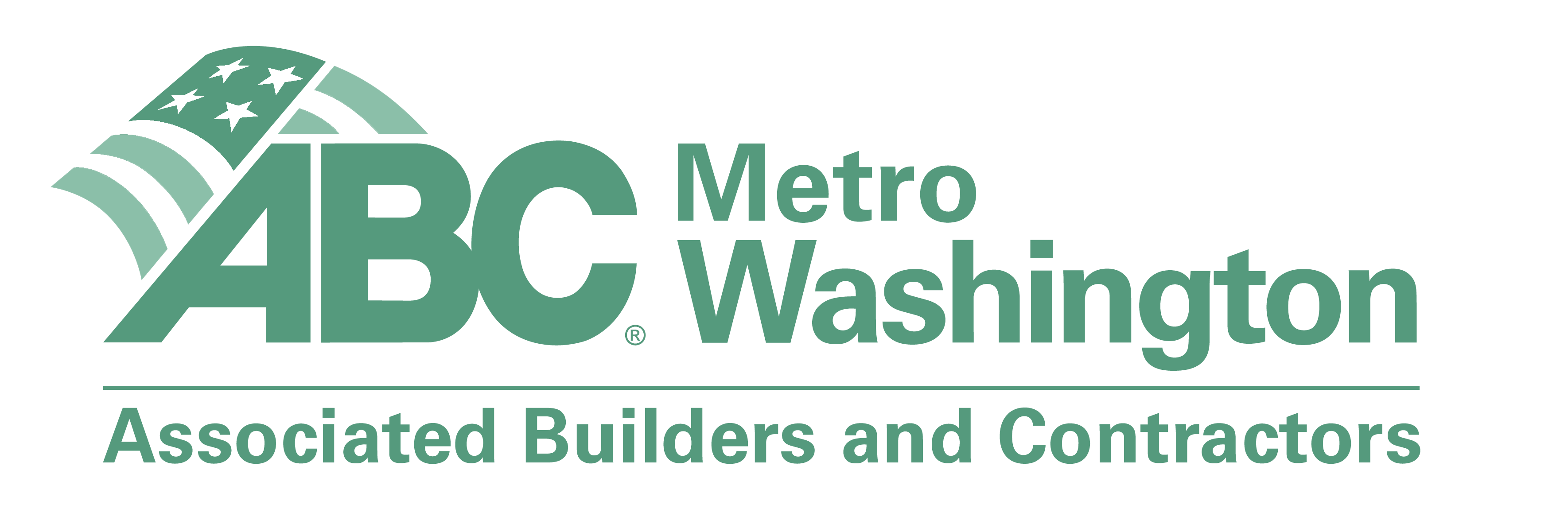Accessible Landscaping: ADA Compliance Made Easy
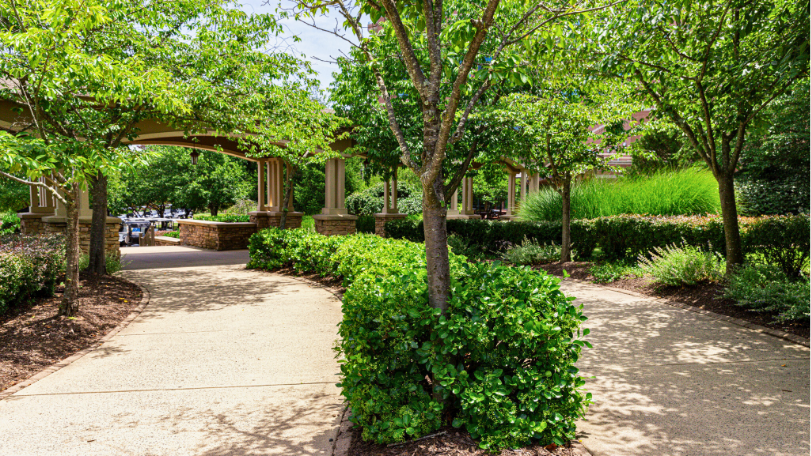
Designing Accessible Landscapes: Incorporating ADA Compliance into Your Projects
Creating an inclusive outdoor environment is essential for commercial properties. Accessible landscaping not only enhances usability for all visitors but also ensures compliance with the Americans with Disabilities Act (ADA). For property managers overseeing HOAs, condos, apartment complexes, office parks, shopping centers, hotels, resorts, and other commercial spaces, integrating ADA-compliant landscape features is crucial to providing safe and welcoming outdoor spaces.
At Complete Landscaping Service, we’ve been designing functional and aesthetically pleasing landscapes in the DC, MD, and Northern VA region for over 40 years. This guide will walk you through the key principles of accessible landscaping, essential features, materials, lighting considerations, and best practices for maintaining accessibility in your property’s outdoor areas.
1. Understanding ADA Compliance in Accessible Landscaping
ADA compliance in accessible landscaping ensures that individuals of all abilities can navigate outdoor spaces safely and comfortably. The law applies to commercial and public properties, requiring features that accommodate individuals with mobility impairments, visual impairments, and other disabilities.
Key ADA Requirements for Accessible Landscaping:
- Pathways: Must be at least 36 inches wide and have a firm, stable, slip-resistant surface to accommodate wheelchair users and those with mobility aids.
- Ramps: Required for any elevation change over ½ inch, with a maximum slope of 1:12 and handrails for additional support.
- Resting Areas: Seating should be available at regular intervals along paths to accommodate people with disabilities.
- Clear Signage: Marked routes, accessible entry points, and tactile/Braille signage for visually impaired individuals.
Failure to comply with ADA regulations can result in legal and financial consequences, including fines and liability issues. Investing in accessible landscaping is a proactive way to create a more inclusive and legally compliant environment.

2. Essential Accessibility Features in Accessible Landscaping
Pathways & Walkways
- Must be at least 36 inches wide to accommodate wheelchair users.
- Constructed from non-slip materials like textured concrete or pavers.
- Free of trip hazards such as raised edges or cracked surfaces.
- Should have a maximum slope of 5% to allow smooth navigation for those with limited mobility.
Ramps & Elevation Changes
- Ramps should not exceed a 1:12 slope to ensure wheelchair accessibility.
- Handrails are required on both sides for additional support.
- Landings must be provided at the top and bottom of ramps.
- Alternative routes like gently sloped paths should be included where possible.
Seating Areas & Rest Zones
- Strategically placed benches at reasonable intervals along walkways.
- Accessible seating should be available at gathering spots such as courtyards and gardens.
- Shaded areas should be included for sun protection.
Accessible Entry Points & Signage
- Entrances should have smooth, step-free transitions.
- Clearly marked signage indicating accessible routes following standards for accessibility.
- Braille/tactile signs at key locations such as entrances and restrooms.
- Lighting to enhance visibility for wayfinding at night.
Water Features & Sensory Gardens
- Interactive, accessible elements that engage multiple senses (e.g., fragrant plants, textured surfaces, and calming water features).
- Raised beds for accessible gardening opportunities.

3. Material Selection for ADA-Compliant Accessible Landscaping
Choosing the right materials ensures that outdoor spaces remain safe and durable for all users.
Slip-Resistant Surfaces
- Textured concrete
- Permeable pavers
- Rubberized surfaces
- Non-slip composite decking
Durable & Low-Maintenance Materials
- Brick and pavers with tight joints to prevent tripping hazards.
- Concrete with broom-finish texture for extra grip.
- Stabilized decomposed granite (ADA-compliant alternative to gravel).
Contrast & Visibility Enhancements
- High-contrast paving and painted curbs to aid visually impaired individuals.
- Use of tactile paving at crossings and entry points.
- Reflective strips on steps and edges.
Drainage & Water Management
- Proper grading to prevent water pooling on walkways.
- Permeable surfaces that allow rainwater to filter through, reducing slipperiness.
- Drainage grates should be ADA-compliant with openings no larger than ½ inch.
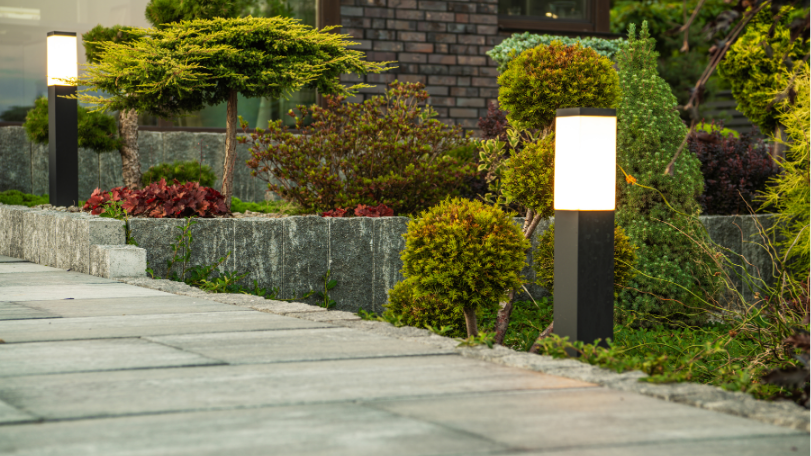
4. Lighting & Safety Considerations for Accessible Landscaping
Proper lighting enhances safety and usability in all outdoor spaces, particularly for individuals with mobility issues or visual impairments.
Pathway & Entryway Illumination for Accessible Landscaping
- Evenly distributed lighting along walkways, entryways, and parking lots.
- Fixtures should minimize glare and shadowed areas.
Motion-Sensor & Low-Glare LED Lighting
- Energy-efficient LED lighting for longevity and cost-effectiveness.
- Motion-activated lights to enhance security.
- Shielded fixtures to reduce glare and light pollution.
Emergency Access & Wayfinding
- Clearly marked, well-lit emergency routes and accessible exits.
- Lighted signs with high-contrast lettering.
- Consistent placement of lighting elements for intuitive navigation.
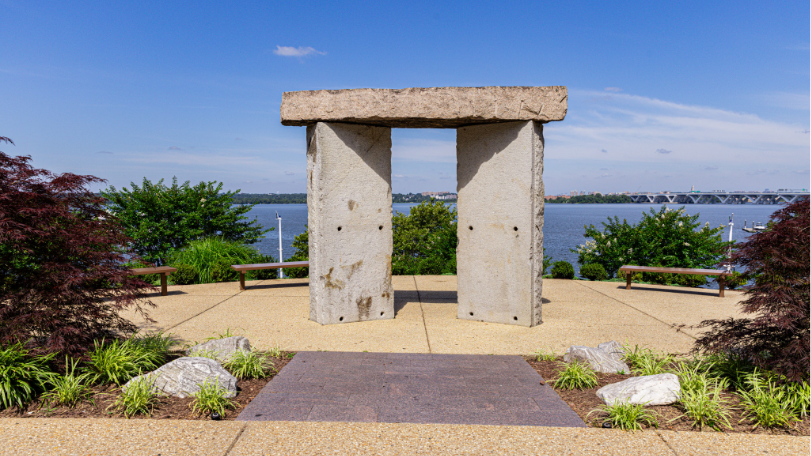
5. Accessible Landscaping for Different Property Types
Each commercial property has unique accessible landscaping needs. Here’s how ADA compliance applies to different property types:
HOAs & Apartment Communities
- Step-free access to clubhouses, pools, and outdoor amenities.
- Wide sidewalks and raised garden beds for accessibility.
Shopping Centers & Office Parks
- Designated wheelchair accessibility parking with clear signage.
- Ramps and curb cuts at all major entry points.
Accessible Landscaping for Hotels & Resorts
- ADA-compliant pool lifts and accessible outdoor seating.
- Wide, step-free access to gardens, patios, and walking trails.
Data Centers & Corporate Campuses
- Accessible employee break areas and picnic spaces.
- Safe, level access to outdoor workspaces and courtyards.
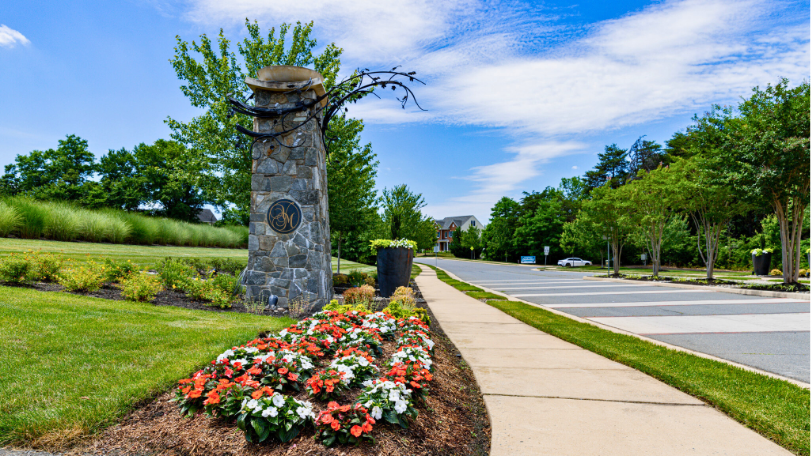
6. Best Practices for Maintaining an ADA-Compliant Landscape
Routine Inspections & Compliance Checks
- Regularly assess pathways for cracks, uneven surfaces, or obstructions.
- Ensure handrails and ramps remain secure and intact.
- Update signage if visibility or readability becomes compromised.
Seasonal Maintenance Considerations
- Remove snow and ice from pathways in winter.
- Trim overgrown plants encroaching on walkways.
- Check drainage systems to prevent water accumulation.
Updating Aging Infrastructure
- Retrofit older properties with modern accessibility features.
- Replace outdated materials with slip-resistant alternatives.
- Upgrade lighting for better visibility and energy efficiency.
Your Next Steps for an ADA-Compliant Landscape
Investing in accessible landscaping ensures that your commercial property is welcoming to everyone while meeting legal requirements. ADA-compliant designs create a safer, more inclusive experience for tenants, employees, and visitors.
At Complete Landscaping Service, we are experienced in designing ADA-compliant landscapes tailored to commercial properties throughout the DC, MD, and Northern VA area. Whether you’re looking to upgrade existing spaces or incorporate accessibility into a new project, our team is here to help.
Contact us today to schedule a consultation and make your outdoor spaces accessible, beautiful, and functional for all!


